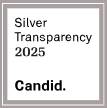Jennifer Woodruff
Instructor
Course 1: Point-of-Care Services – A Course on How to Get Efficient Patient-Centered Care
In this course, you will learn how clinics are designed to give you the ability to maintain, get treatment, or recover from illness or injury more easily. This course details point-of-care service providers, what they do, the clinics they work in, and the overall structure of the healthcare system so that you can become a more active member in your treatment. After completing this course, you would have already taken the initial steps to advance your health communication and literacy skills to govern your healthcare more efficiently and effectively.
Course Takeaways
- Ability to quickly analyze the healthcare professionals’ roles and the clinic’s layout.
- Become acquainted with and more comfortable navigating the healthcare system.
- Obtain fundamental health literacy and proficiency knowledge to have a clarified understanding of how it directly affects your healthcare.
- Learn essential communication skills to better protect your healthcare from oversights and errors.
4 Micro-lessons | 4 Quizzes | 30-Minutes to Complete
Course Content
Jennifer Woodruff
Jennifer Woodruff. MHA., is a highly experienced healthcare advocate and educator, serving as the founder of the renowned Patient Better program. With over 20 years of dedicated service in the healthcare industry, Jennifer holds a Master's in Healthcare Administration, making her an expert in the field of patient education and empowerment.
As the instructor for the Patient Better Academy, Jennifer is committed to equipping individuals with the knowledge and tools they need to become informed advocates for their own healthcare. With a passion for extending the impact of Patient Better, Jennifer established the academy to cater to visual learners, ensuring that more individuals can access and benefit from this invaluable program.
Through her extensive expertise and unwavering dedication, Jennifer Woodruff continues to make a profound impact on healthcare empowerment, helping countless individuals navigate their healthcare journeys with confidence and proficiency.

